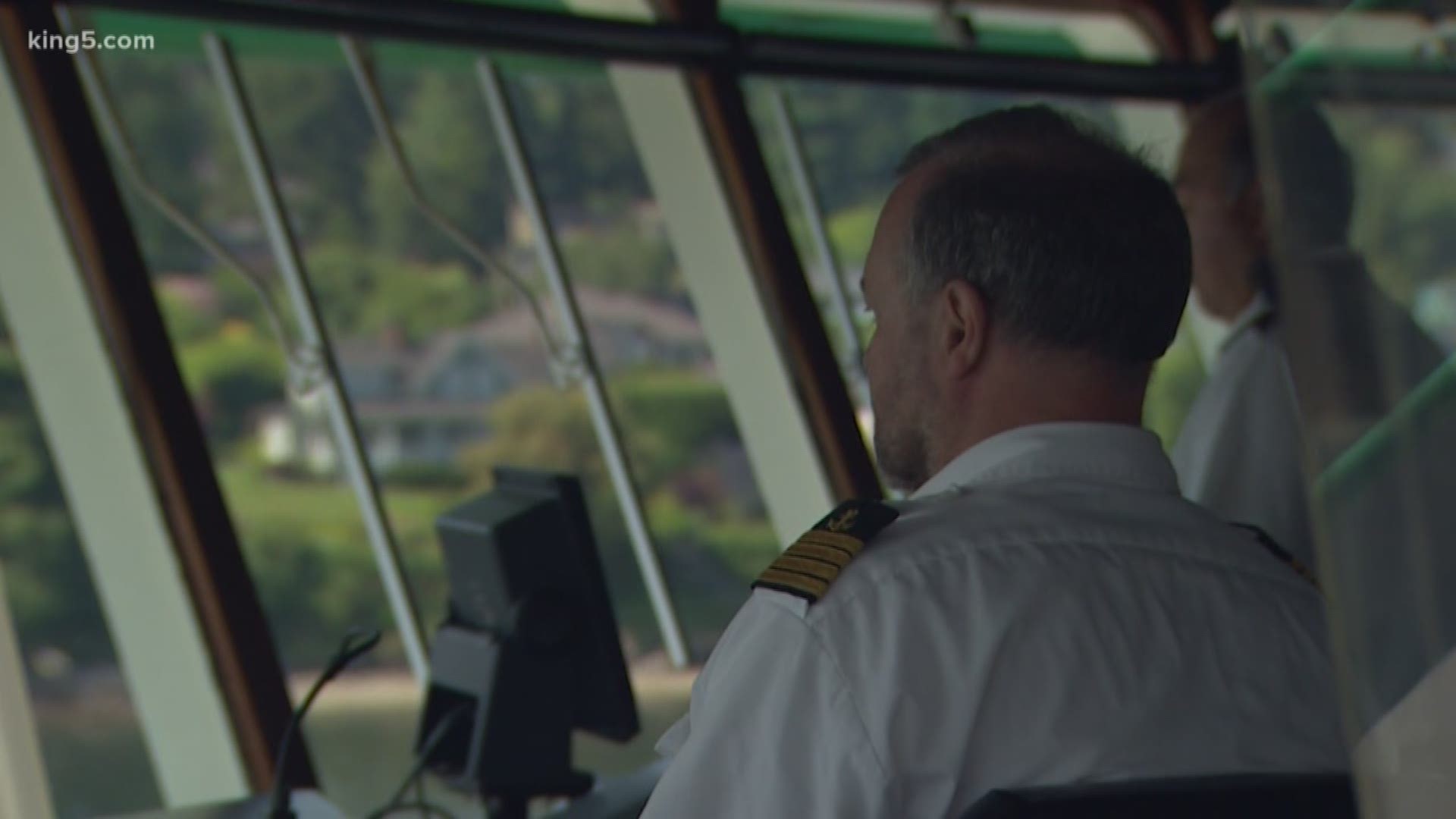SEATTLE — Officials believe a juvenile humpback whale was likely killed after being struck by a Washington state ferry this week in Elliott Bay.
Witnesses said the whale breached just feet in front of the M/V Wenatchee after it left Coleman Dock in downtown Seattle. The crew had no time to turn or stop, officials said.
Witnesses reported seeing the creature bleeding beside the boat.
It’s the first recorded strike of its kind between a ferry and large marine mammal, thanks in part to the work of crews aboard these ferries which traverse congested waters day in and day out.
Captain Brian Jonsson led the crew of the M/V Tacoma on the same Seattle-Bainbridge run on Thursday.
“It can get busy in the harbor,” Jonsson said. “So, you’ve really just got to pay attention.”
Jonsson said while the propellers and rudders at either end of each ferry make it more maneuverable than other craft, it still takes about two boat lengths, which is around 600 feet, to stop from normal cruising speed.
Policies are in place to prevent collisions. If whales are reported in the area, that information is shared out to ferry crews so they can be alert. Officials said no whales were reported in the area before the ferry struck the humpback whale.
If whales are reported, Director of Marine Operations Gregory Faust said the ferries employ a “slow down” program. For example, boats that are heading to Sidney, British Columbia will slow down in the Haro Strait to watch for whales and reduce boat noise, which hinders Southern Resident Killer Whales’ ability to hunt.
Jonsson also noted they keep two people in the pilot house, a helmsman and navigating officer. If conditions worsen, they’ll post an additional lookout often at the forward opening. This is to watch and listen for hazards and marine traffic.
Still, Jonsson said, whales can be hard to read.
“Again, they’re unpredictable,” he explained. “They make their dive, now where is it going to go? He could turn around, come around the same spot, 400 yards further down. They can go down 10-15 minutes. You can see him go down over there and who knows where he’s going to come up 10 minutes later.”
Still, crews make every effort to avoid a collision.
“Any time we see them protocol is slow down, give them the right of way if we can,” Jonsson said. “Always try to slow down and go behind them.”
Officials said on Wednesday that the crew of the Wenatchee was upset by the strike. Jonsson echoed that feeling.
“I spent a lot of time on small cruise boats up in Southeast Alaska where we were looking at wildlife, enjoying the whales, trying to bring that to our passengers,” he said. “So, the rare occasions where something like that happens, it does sting a bit. I’ve seen one other incident where that was a whale strike, a cruise ship, and the whale was wrapped around the bulbous bow. They had no idea it was there until they got to port.”
Washington Fish and Wildlife searched for the injured whale Wednesday, but it has not yet been found.

